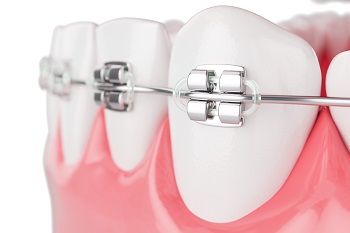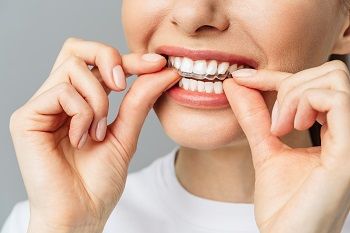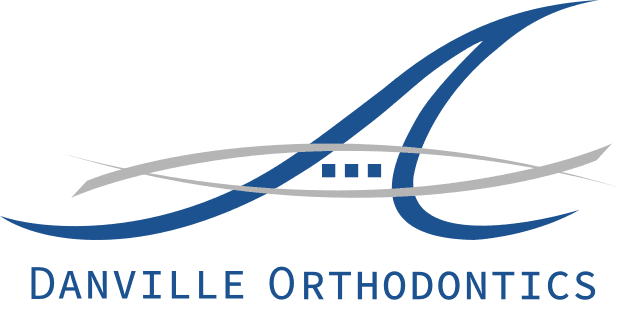The Different Types of Orthodontic Treatment Options Available
In this blog, we delve into orthodontic treatment options, shedding light on the techniques available to individuals seeking to enhance their smiles.
From time-tested methods to cutting-edge technologies, the field of orthodontics has evolved significantly, offering patients a spectrum of options to suit their preferences, lifestyle, and unique dental needs.
Types of Orthodontic Treatment Options Available
Traditional Braces
Traditional braces have long been a reliable and effective orthodontic treatment option for correcting dental misalignments. This tried-and-true method utilizes a system of brackets, wires, and elastic bands to gradually move the teeth into their desired positions. Despite the emergence of newer alternatives, traditional braces are widely used and have undergone significant advancements in recent years.
- Metal Braces: Metal braces consist of stainless-steel brackets bonded to the teeth' front surface. Connected by an archwire, these brackets apply gentle pressure to put the teeth into proper alignment over time. Metal braces are durable, which makes them suitable for treating even the most complex cases of malocclusion. They allow for precise control and can effectively correct overcrowding, gaps, rotated teeth, and bite problems.

- Ceramic Braces: Ceramic braces are an excellent choice for individuals seeking a more aesthetically pleasing option. These braces use tooth-colored or clear ceramic brackets, which blend in with the natural color of the teeth. Due to this, it makes them less noticeable than traditional metal braces. While they provide the same level of effectiveness as metal braces, ceramic braces offer an enhanced cosmetic appeal.
- Lingual Braces: They offer a discreet orthodontic solution as they are placed on the back surface of the teeth, making them virtually invisible from the front. These braces are custom-made to fit the contours of your teeth, ensuring a comfortable fit. Lingual braces can address various alignment issues but require special expertise for both placement and adjustment.
- Self-ligating Braces: Self-ligating braces are a modern advancement in orthodontic treatment. They feature brackets with built-in clips or doors that hold the archwire in place, eliminating the need for elastic bands. This design allows for reduced friction and faster treatment progress.
Clear Aligners
Clear aligners have revolutionized orthodontic treatment by offering a comfortable alternative to traditional braces. These transparent, removable trays have gained immense popularity among individuals seeking a nearly invisible way to straighten their teeth. Clear aligners are custom-made for each patient, providing a personalized treatment experience. Let's explore the different aspects of clear aligner treatment:
- Invisalign: Invisalign is one of the most well-known and widely used clear aligner systems. It utilizes advanced 3D imaging technology to create custom aligners. The Invisalign aligners are made of a clear, safe plastic that is almost invisible when you wear them. The aligners are removable, allowing for easy oral hygiene routines and the freedom to eat without restrictions. Treatment progress is tracked through regular visits to the orthodontist, who will provide new aligners as your teeth gradually shift into place.
- ClearCorrect: ClearCorrect is another popular clear aligner system that functions similarly to Invisalign. It employs a series of transparent, removable aligners to align the teeth gradually. ClearCorrect aligners are custom-made from a thin, clear plastic material, providing a discreet treatment option. Like Invisalign, ClearCorrect aligners can be easily removed for eating, brushing, and flossing, ensuring optimal oral hygiene throughout treatment.
Retainers
Retainers are an essential component of orthodontic treatment that helps maintain the alignment and stability of teeth after the active phase of braces or clear aligner treatment. They play an essential role in preventing teeth from shifting back to their original positions, allowing the results of orthodontic treatment to be maintained long-term. Let's explore the different types of retainers commonly used:
- Hawley Retainers: Hawley retainers are a traditional type of removable retainer consisting of a thin acrylic base that rests against the mouth's roof or the teeth' lower arch. This base is customized to fit the individual's mouth, and a wire component runs across the front of the teeth to hold them in place. Hawley retainers offer durability, adjustability, and the ability to address minor orthodontic concerns even after active treatment. They are available in various colors and designs, allowing for some personalization.
- Essix Retainers: Essix retainers, also known as clear or aligner-style retainers. They are made from a clear plastic material that fits easily over the teeth. They are custom-made using a mold of the patient's teeth and offer a discreet and comfortable retainer option. Essix retainers are removable, allowing for easy cleaning and maintenance.
- Fixed Retainers: Fixed retainers, also called bonded or permanent retainers, are a type of retainer affixed to the back of the teeth using a dental adhesive. A thin wire is bonded to the teeth' lingual (tongue-side) surfaces, usually in the lower front teeth region. Fixed retainers provide continuous support to prevent tooth movement and are not visible when smiling. One benefit is that they are permanently fixed, which means there is no need for daily insertion and removal like with removable retainers. However, they require extra attention to oral hygiene to ensure proper cleaning around the wires.

The choice of retainer type depends on various factors, including the orthodontist's recommendation, the patient's specific needs, and personal preferences. Retainers are typically worn full-time immediately after the active orthodontic treatment phase and gradually transitioned to nighttime wear as the teeth stabilize. Regular follow-up visits with the orthodontist are necessary to monitor the progress and make any adjustments required to the retainer.
Functional appliances
Functional appliances are orthodontic devices designed to correct dental and skeletal imbalances by influencing the growth and position of the jaws. They are commonly used in orthodontic treatment for individuals with misaligned jaws or bite issues. Functional appliances work by applying controlled forces to stimulate jaw growth or modify the position of the jaws. Let's explore some common types of functional appliances:
- Headgear: Headgear is a removable or fixed appliance that utilizes an external framework and straps to exert forces on the teeth and jaws. It is typically worn in the evenings or overnight to help correct skeletal discrepancies, such as overbites or underbites. Headgear provides traction and directs the growth of the jaws, ultimately improving the alignment of the teeth and achieving a harmonious bite relationship.
- Herbst Appliance: The Herbst appliance is a fixed functional appliance that consists of metal rods and tubes connected to the upper and lower jaws. It promotes forward growth of the lower jaw, helping to correct overbites and improve the overall bite. The Herbst appliance is cemented onto the teeth and remains in place for a specific duration determined by the orthodontist.
- Twin Block Appliance: The Twin Block appliance is a removable functional appliance composed of upper and lower bite blocks. These blocks work together to position the lower jaw forward, encouraging proper alignment and functional relationship between the upper and lower teeth. Twin Block appliances are custom-made and require regular adjustments to accommodate jaw growth and achieve desired results.
Functional appliances are typically used during the growing phase when the jaws are still developing and can be guided. They are often employed as an early interceptive treatment for children and adolescents to correct skeletal discrepancies and minimize the need for more extensive orthodontic procedures in the future.
Surgical Orthodontics
Orthognathic surgery is a treatment that combines orthodontics with oral and maxillofacial surgery. It's recommended for people with significant jaw discrepancies or skeletal abnormalities that can't be fixed with orthodontic treatment alone. Surgical orthodontics aims to improve functional bite and facial aesthetics by repositioning the jaws.
Mini Dental Implants
Mini-dental implants, mini-implants, or small-diameter implants (SDIs) are smaller than traditional dental implants. They support and stabilize dental restorations, such as crowns, bridges, or dentures. Mini dental implants offer several advantages and are a popular choice in some instances.
Orthodontic treatment offers various options to address dental misalignments and improve oral health and aesthetics. Whether it's traditional braces, clear aligners, retainers, functional appliances, surgical orthodontics, accelerated orthodontics, mini dental implants, early interceptive treatment, or specialized orthodontic treatments, each option serves a specific purpose and caters to different patient needs.
Contact your Danville dentist, Dr. Hoss Abar, DDS, MSD, at Danville Orthodontics to learn about Different Types of Orthodontic Treatment Options.
Resource:
How Do Orthodontic Treatments Work?
*Neither this nor any other content in this media is meant to prescribe, recommend, or prevent any treatment or procedure. We highly recommend that you get the advice of a qualified dentist or other medical practitioners regarding your specific dental condition.
